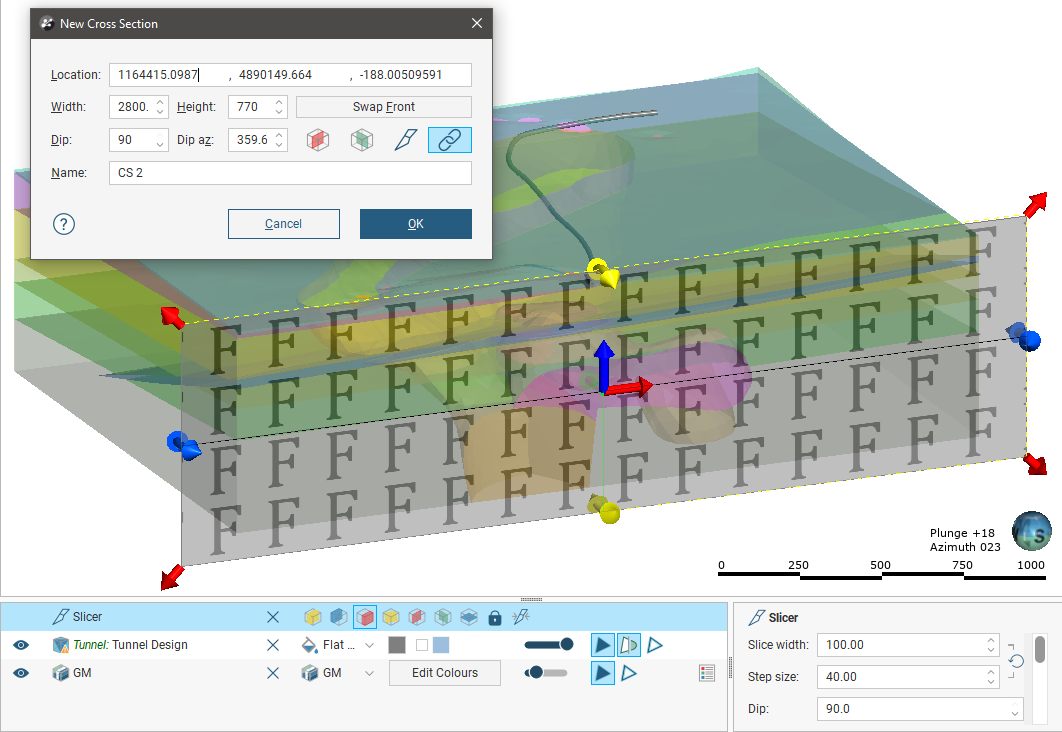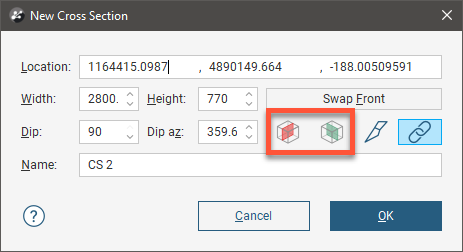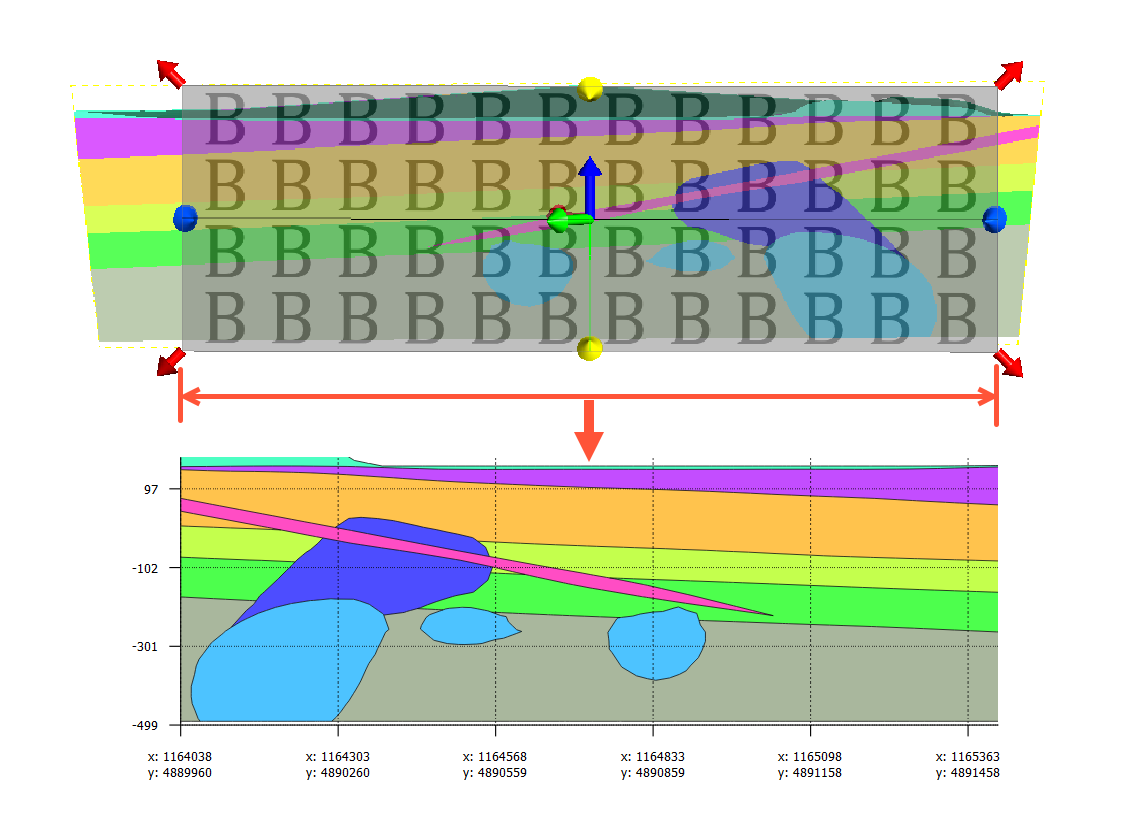Creating Cross Sections
To create a cross section in the scene, add a model to the scene. Next, right-click on the Cross Sections and Contours folder and select New Cross Section. The New Cross Section window will appear, together with a section plane and controls in the scene that let you adjust the position of the section plane:

If the slicer is already in the scene when you select New Cross Section, the position of the slicer will be used to define the initial orientation of the section. This is an effective way of creating a section from the slicer: add the model to the scene, draw a slice and then create a cross section.
The front (F) and back (B) of the section plane is indicated in the scene. To swap the front and back, click the Swap Front button.
Adding the section into the scene is another useful way to check the orientation of the section is as expected.
Use the handles in the scene to position the section plane. The handles work in the same manner as the moving plane controls, as described in The Moving Plane.
Two buttons in the New Cross Section window let you create a cross section that is aligned north-to-south (![]() ) or east-to-west (
) or east-to-west (![]() ):
):

The Lock section to slicer button (![]() ) is enabled when it is highlighted in blue. Any changes to the cross section orientation will also change the slicer orientation when it is enabled. When disabled, the cross section orientation and position can be adjusted without changing the slicer. Click the Set section to slicer button (
) is enabled when it is highlighted in blue. Any changes to the cross section orientation will also change the slicer orientation when it is enabled. When disabled, the cross section orientation and position can be adjusted without changing the slicer. Click the Set section to slicer button (![]() ) in the New Cross Section window to snap the cross section orientation back to the slicer.
) in the New Cross Section window to snap the cross section orientation back to the slicer.
Once the section plane is positioned as required, click OK to create the new cross section, which will appear in the Cross Sections and Contours folder.
Next, you need to project evaluations onto the section and define the section layout. Many objects in a project can be evaluated on cross sections, as described in Evaluations. Such objects include:
- Geological models
- Interpolants
- Distance functions
- Surfaces
- Design lines
- GIS lines
- Polylines
First, right-click the section in the project tree and select Evaluations, adding the models that need to appear on the section. Then right-click the section in the project tree and select New Section Layout. Use the section layout editor to design the section and communicate the information you need to convey.
For a complete description on how to evaluate models onto a section and use the section layout editor, see Section Layouts.
Once you have created a section, check the section’s extents and orientation. The initial dimensions of the section on the page are determined by the size of the section plane, and its orientation on the page is determined by the front (F) and back (B) faces of the section plane. Usually you will want the front face of the section plane to be featured to get what you expect on the resulting section. Here, the front and back faces of the section have been swapped, which results in the section displayed on the page being flipped:

Got a question? Visit the Seequent forums or Seequent support
© 2022 Bentley Systems, Incorporated